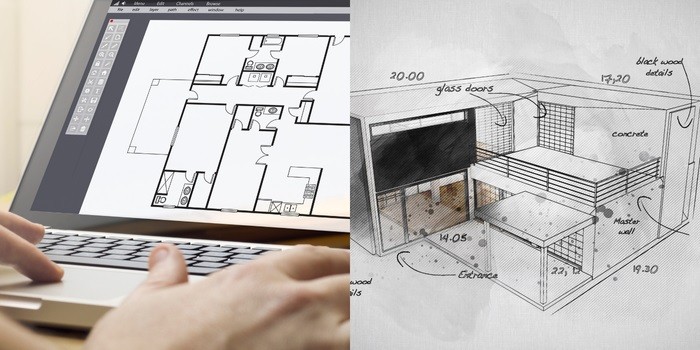To ensure accurate CNC positioning with Fanuc, verify the machine’s home position and calibrate it regularly. Follow the manufacturer’s guidelines for setup and adjustments.
Accurate CNC positioning is crucial for quality production and efficiency in machining. Fanuc systems offer reliable solutions to achieve this precision. By focusing on the machine’s home position, operators can prevent errors and maintain consistency. Proper calibration and routine checks enhance the overall performance of CNC machines.
Understanding the key steps to establish a valid home position will lead to better outcomes and reduced downtime. In a competitive landscape, precision is not just an advantage; it’s a necessity for success. Emphasizing these practices can significantly improve your machining processes and product quality.
Introduction To Fanuc In Cnc Machining
Fanuc is a leader in CNC machining technology. It provides advanced systems that enhance precision and efficiency. Understanding Fanuc’s role is key for successful CNC operations.
The Role Of Fanuc Systems
Fanuc systems are essential in modern CNC machining. They control machines with high precision. Here are key features of Fanuc systems:
- User-friendly interface: Easy for operators to navigate.
- Advanced programming: Supports complex machining tasks.
- Real-time monitoring: Tracks machine performance instantly.
| Feature | Benefit |
|---|---|
| User-friendly interface | Reduces training time for operators. |
| Advanced programming | Increases flexibility in machining processes. |
| Real-time monitoring | Enhances overall machine reliability. |
Importance Of Precision In Cnc Positioning
Precision is crucial in CNC machining. It affects the quality of the final product. Accurate positioning leads to:
- Improved product quality.
- Reduced material waste.
- Enhanced production efficiency.
Fanuc systems ensure precise CNC positioning. They use advanced algorithms to achieve this accuracy. This makes Fanuc a trusted choice for manufacturers.
Step 1: Understanding Fanuc Control Panel
Understanding the Fanuc Control Panel is crucial for accurate CNC positioning. This step lays the foundation for effective machine operation. Familiarity with the control panel enhances your efficiency and precision.
Key Features Of The Control Panel
The Fanuc Control Panel boasts several key features:
- User-Friendly Display: Clear layout for easy navigation.
- Function Keys: Quick access to essential functions.
- Emergency Stop: Immediate shutdown for safety.
- Data Input: Simple entry for programs and parameters.
- Jog Modes: Controls for precise manual movement.
These features streamline operations and improve user experience. Understanding each feature is vital for effective CNC machining.
Navigating The Fanuc Interface
To navigate the Fanuc interface:
- Power On: Turn on the machine and wait for the boot process.
- Home Screen: Familiarize yourself with the home screen layout.
- Function Keys: Learn the function of each key. Use the labeled buttons to access different modes.
- Jogging: Select the jog mode for manual control. Use the arrows to move the tool.
- Menu Access: Press the
MENUkey to access advanced settings.
Practice navigating the interface regularly. This will improve your confidence and proficiency.
Step 2: Setting Up For Precision
Setting up for precision is crucial in CNC machining. Accurate positioning leads to better results. Follow these key steps to ensure your CNC machine operates effectively.
Calibration Of Cnc Machines
Calibration ensures your CNC machine works accurately. Proper calibration reduces errors and improves quality. Here are the essential steps:
- Check the machine’s level.
- Use calibration tools like dial indicators.
- Adjust axes for accurate movement.
- Perform test cuts and measure results.
- Document all calibration settings.
Regular calibration keeps your CNC machine reliable. Schedule calibration every few months. This helps maintain accuracy over time.
Inputting Accurate Coordinates
Inputting the right coordinates is vital. Incorrect coordinates lead to mistakes. Follow these tips for accurate input:
- Double-check all measurements.
- Use software that validates coordinates.
- Input coordinates in the correct format.
- Review and verify before starting the machine.
Consider using a coordinate system template. This can help prevent errors. Always keep a backup of your settings.
| Tip | Description |
|---|---|
| Double-check Measurements | Verify all dimensions before inputting data. |
| Use Validation Software | Employ software that checks for input errors. |
| Coordinate Format | Ensure coordinates match machine requirements. |
Accurate coordinate input saves time and material. It avoids costly mistakes. Take time to ensure all inputs are correct.
Step 3: Programming For Perfection
Programming is crucial for accurate CNC positioning. Proper programming ensures that the machine understands its tasks. This leads to precise cuts and movements. Let’s explore essential aspects of programming for Fanuc CNC machines.
Writing And Editing Cnc Programs
Writing and editing CNC programs require attention to detail. Here are key points to consider:
- Use clear and concise language.
- Organize code into logical sections.
- Comment on complex lines for clarity.
- Test programs with simulation tools.
Editing should focus on improving code performance. Remove unnecessary lines. Ensure all commands are in the correct sequence. Double-check for syntax errors. This practice enhances program reliability.
Using Fanuc’s G-codes And M-codes
Fanuc uses G-Codes and M-Codes for machine instructions. Understanding these codes is vital for effective programming.
| Code Type | Description |
|---|---|
| G-Codes | Control movement, speed, and positioning. |
| M-Codes | Control machine functions like coolant and tool changes. |
Here are some commonly used G-Codes:
- G00 – Rapid positioning
- G01 – Linear interpolation
- G02 – Circular interpolation clockwise
- G03 – Circular interpolation counterclockwise
Familiarize yourself with M-Codes as well:
- M00 – Program stop
- M03 – Spindle on (clockwise)
- M05 – Spindle stop
Using these codes correctly enhances CNC performance. Proper programming minimizes errors and ensures accurate results.
Step 4: Running Test Cycles
Running test cycles is crucial for accurate CNC positioning. This step helps identify errors and fine-tune your machine settings. Proper testing ensures quality output and reduces waste. Follow these key processes for effective test cycles.
Simulating Cnc Operations
Simulating CNC operations allows you to preview the machining process. Use simulation software to visualize movements. This step helps detect potential issues before actual machining begins.
- Check for tool collisions.
- Verify program logic.
- Adjust speeds and feeds.
Simulations save time and materials. Ensure your software is up-to-date for the best results.
Adjusting Parameters For Optimal Performance
Fine-tuning parameters is essential for precision. Review settings for speed, feed rates, and tool paths. Make adjustments based on simulation results.
| Parameter | Recommended Values |
|---|---|
| Speed | 3000 RPM |
| Feed Rate | 150 mm/min |
| Tool Path | Linear |
After adjustments, run a small test cycle. Observe the output closely. Look for any discrepancies in the machining process. Make further adjustments if needed. This iterative process ensures optimal performance.
Step 5: Maintenance And Troubleshooting
Proper maintenance and effective troubleshooting are crucial for accurate CNC positioning with Fanuc systems. This step ensures your machinery operates smoothly. Regular checks prevent errors and extend the life of your equipment.
Regular Maintenance Routines
Establishing a regular maintenance routine is vital. Follow these key practices:
- Daily Inspections: Check for loose connections and wear.
- Weekly Cleanings: Remove dust and debris from components.
- Monthly Lubrication: Apply lubricant to moving parts.
- Quarterly Calibration: Verify tool offsets and workpiece coordinates.
- Annual Overhaul: Inspect major components for wear and tear.
Maintain a detailed log of all maintenance activities. This helps track performance and identify recurring issues. Here’s a simple table to help manage your routine:
| Maintenance Task | Frequency | Responsible Person |
|---|---|---|
| Daily Inspections | Daily | Operator |
| Weekly Cleanings | Weekly | Technician |
| Monthly Lubrication | Monthly | Technician |
| Quarterly Calibration | Quarterly | Engineer |
| Annual Overhaul | Yearly | Engineer |
Troubleshooting Common Fanuc Errors
Errors can occur during CNC operations. Understanding common issues helps resolve them quickly. Here are some frequent Fanuc errors:
- Alarm 1: Overheating. Check cooling systems.
- Alarm 2: Servo motor error. Inspect motor connections.
- Alarm 3: Tool offset error. Verify tool settings.
- Alarm 4: Communication error. Test cable connections.
Follow these steps for troubleshooting:
- Identify: Check the alarm code displayed.
- Research: Consult the Fanuc manual for specific errors.
- Inspect: Examine components related to the error.
- Fix: Apply the recommended solution.
- Test: Run the system to ensure the issue is resolved.
Regular maintenance and prompt troubleshooting ensure your Fanuc CNC system runs efficiently. Stay proactive to avoid major issues.
Frequently Asked Questions
What Is Cnc Positioning?
CNC positioning refers to the precise placement of a tool within a CNC machine to ensure accurate machining.
Why Is Accurate Cnc Positioning Important?
Accurate CNC positioning ensures high-quality machining, reduces errors, and improves overall production efficiency.
How To Calibrate Cnc Machines Effectively?
Calibrate CNC machines by using precision tools, checking axes alignment, and regularly verifying position accuracy.
What Tools Are Essential For Cnc Positioning?
Essential tools include dial indicators, laser alignment tools, and software for real-time position monitoring.
How Does Fanuc Improve Cnc Accuracy?
Fanuc enhances CNC accuracy through advanced algorithms, robust feedback systems, and precise control technology.
What Are Common Cnc Positioning Errors?
Common errors include misalignment, incorrect tool offsets, and software configuration issues that lead to machining inaccuracies.
Conclusion
Achieving accurate CNC positioning with Fanuc requires attention to detail and proper calibration. By following the key steps outlined, you can enhance precision and efficiency in your machining processes. A well-set machine not only improves product quality but also boosts overall productivity.
Invest time in these practices for optimal results.





